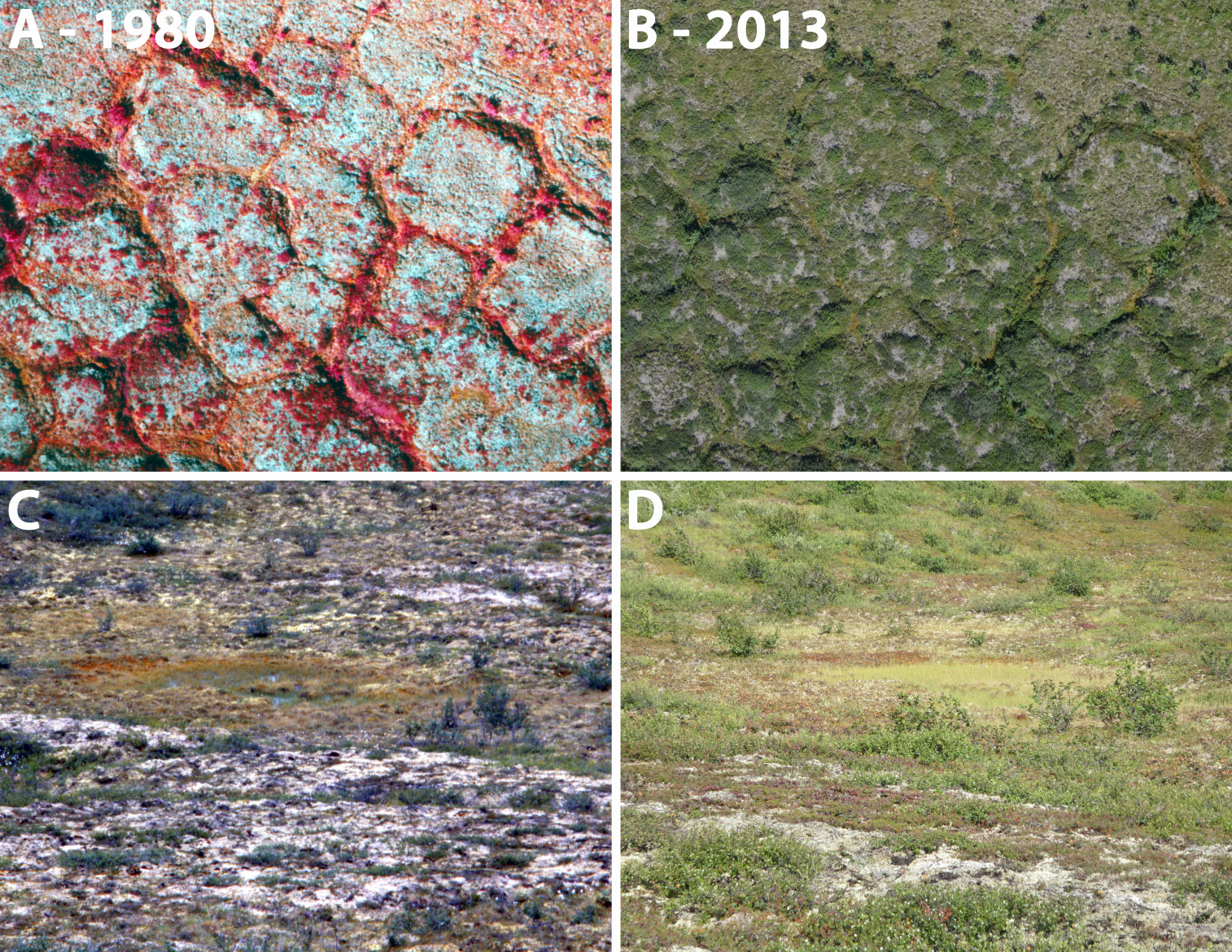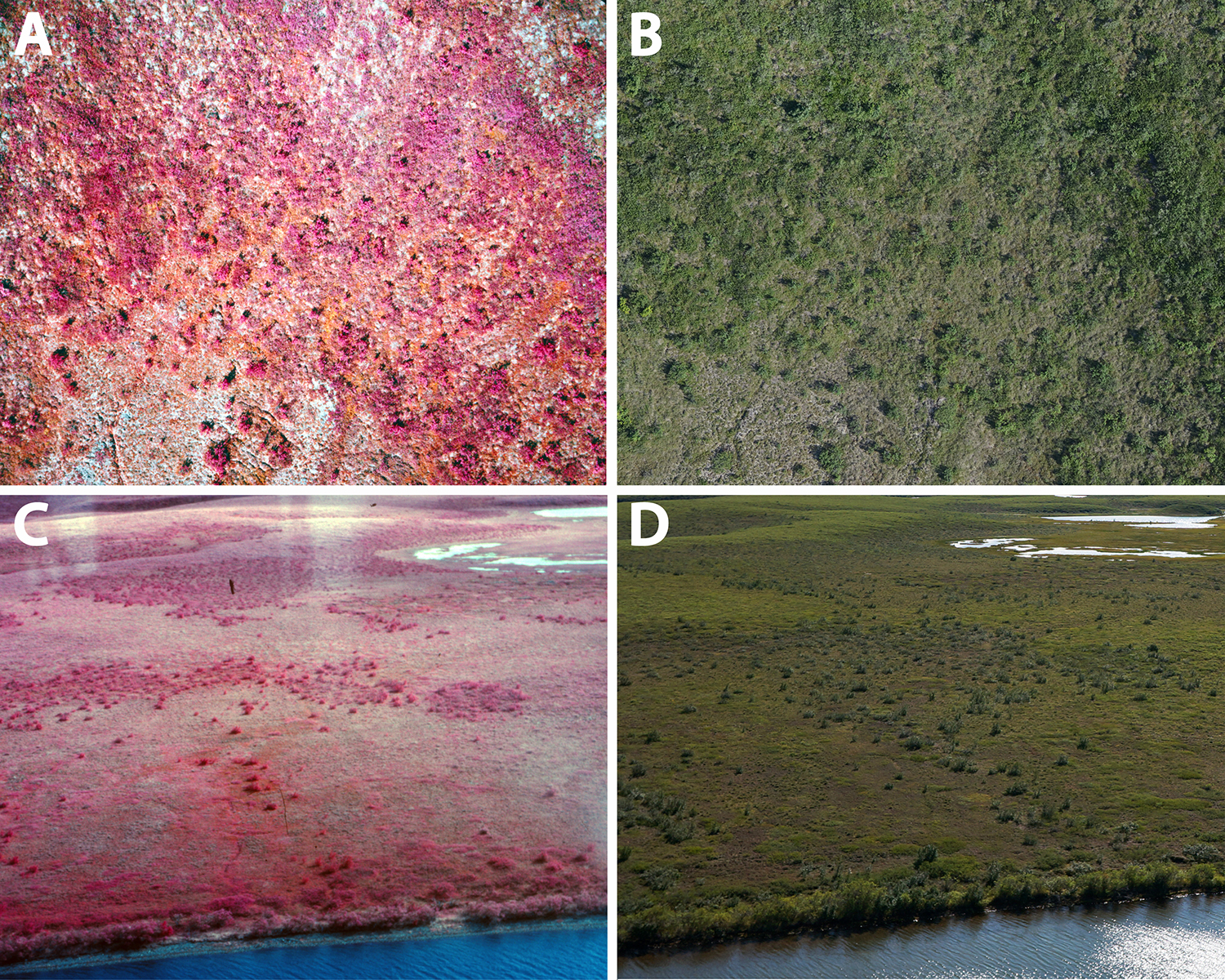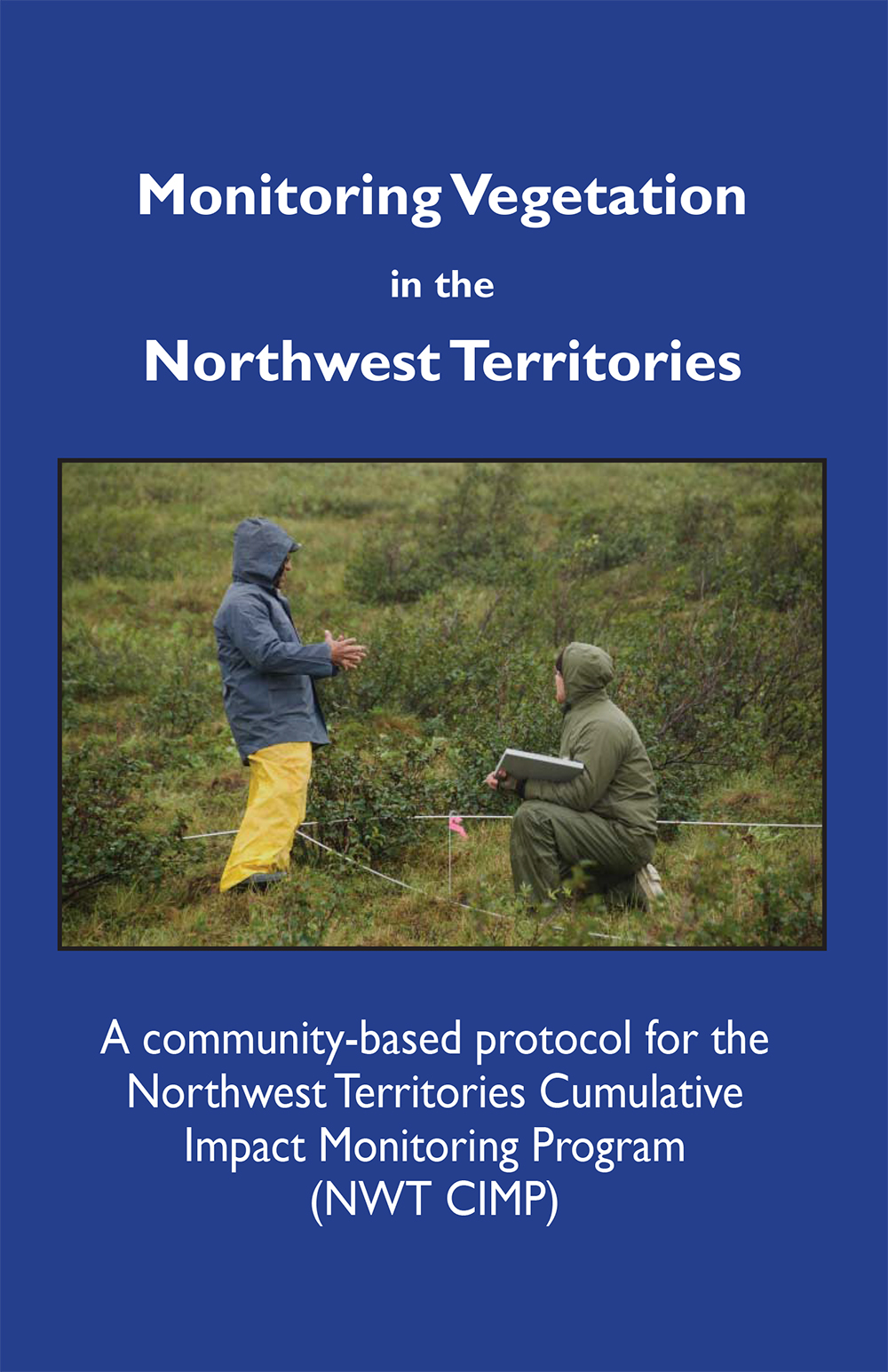
Vegetation change on the Tuktoyaktuk Peninsula, NWT from 1980 to 2013.

Vegetation change on the Tuktoyaktuk Peninsula, NWT from 1980 to 2013.

Please click on the guidebook cover to the left to download the vegetation monitoring protocol that has been implemented by numerous organizations and communities throughout the NWT.
Data sheets are available in PDF format below.
Active Layer Data Sheet
Berry Plots Data Sheet
Community Composition Data Sheet
Functional Groups Data Sheet
Sample Collection Chits
Site Description Data Sheet
Trees Data Sheet
References
1. Moffat, N.D.,T.C, Lantz, R.H. Fraser, and I. Olthof. (2016). Recent vegetation change (1980-2013) in the tundra ecosystems of the Tuktoyaktuk Coastlands, NWT, Canada. Arctic, Antarctic and Alpine Research. 48: 581-597. PDF
2. Cameron, E.A. and Lantz, T.C. (2016). Drivers of tall shrub proliferation adjacent to the Dempster Highway, Northwest Territories, Canada. Environmental Research Letters. 114: 045006. PDF
Fraser, R.H., Lantz, T.C., Olthof, I., Kokelj, S.V., and Sims, R.A. (2014). Warming-induced shrub expansion and lichen decline in the western Canadian Arctic. Ecosystems. 17: 1151-1168. PDF
4. Lantz, T.C., Marsh, P. and Kokelj, S.V. (2013). Recent shrub proliferation in the Mackenzie Delta Uplands and microclimatic implications. Ecosystems. 16: 47-59. doi:10.1007/s10021-012-9595-2. PDF
5. Myers-Smith, I.H., Elmendorf, S.C., Beck, P.S.A., Wilmking, M., Hallinger, M., Blok, D., Tape, K.D., Rayback, S.A., Macias-Fauria, M., Forbes, J.D.M. Speed, N. Boulanger-Lapointe, C. Rixen, E. Lévesque, N.M. Schmidt, B.C., Baittinger, C., Trant, A.J., Hermanutz, L., Collier, L.S., Dawes, M.A., Lantz, T.C., Weijers, S., Jørgensen, R.H., Buchwal, A., Buras, A., Naito, A.T., Ravolainen, V., Schaepman-Strub, G., Wheeler, J., Wipf, S., Guay, K., Hik D.S.,& M.Vellend. (2015). Climate sensitivity of shrub growth across the tundra biome. Nature Climate Change 5: 887-891. 10.1038/nclimate2697. PDF
6. Lantz, T.C., Gergel, S.E. and Henry, G.H.R. 2010. Response of green alder (Alnus viridis subsp. fruticosa) patch dynamics and plant community composition to fire and regional temperature in north-western Canada. Journal of Biogeography. 37: 1597-1610. PDF
7. Lantz, T.C., Gergel, S.E. and Kokelj, S.V. 2010. Spatial heterogeneity in the shrub tundra ecotone in the Mackenzie Delta Region, Northwest Territories: Implications for Arctic environmental change. Ecosystems. doi: 10.1007/s10021-009-9310-0. PDF
8. Cameron, E.A. and Lantz, T.C. (2017). Persistent changes to ecosystems following winter road construction and abandonment in an area of discontinuous permafrost, Nahanni National Park Reserve, Northwest Territories, Canada. Arctic, Antarctic, and Alpine Research. 49(2): 259-276. PDF
9. Lantz, T.C. (2017). Vegetation succession and environmental conditions following catastrophic lake drainage in Old Crow Flats, Yukon. Arctic. 70(2):177-189. doi:10.14430/arctic4646. PDF
10. Lantz, T.C. and Turner, K.W. (2015). Changes in lake area in response to thermokarst processes and climate in Old Crow Flats, Yukon. Journal of Geophysical Research: Biogeosciences. PDF
11. Gill, H.K., Lantz, T.C., O’Neill, B., and Kokelj, S.V. (2014). Cumulative impacts and feedbacks of a gravel road on shrub tundra ecosystems in the Peel Plateau, Northwest Territories, Canada. Arctic, Antarctic and Alpine Research. 46: 947-961. PDF
12. Lantz, T.C., Kokelj, S.V., Gergel, S.E. and Henry, G.H.R. (2009). Relative impacts of disturbance and temperature: persistent long-term changes in microenvironment and vegetation in retrogressive thaw slumps. Global Change Biology. 15: 1664-1675. doi:10.1111/j.1365-2486.2009.01917.x. PDF
13. Fraser, R. H., Olthof, I., Lantz, T. C., & Schmitt, C. (2016). UAV photogrammetry for mapping vegetation in the low-Arctic. Arctic Science, 2(3): 79-102. PDF